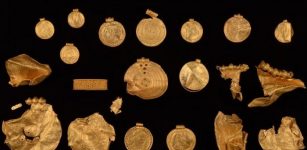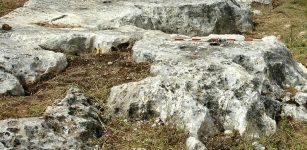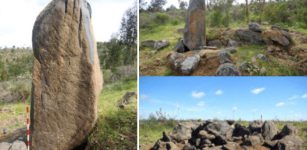Mystery Of Ancient Gaza Wine – New Insight
Conny Waters – MessageToEagle.com – Commercial production of luxury “Gaza wine” was long assumed to be the economic basis of Late Antique settlement in the Negev Desert. Scientists have long studied the subject.
View of Ein Avdat in the Zin Valley of the Negev desert. Image credit: Andrew Shiva / Wikipedia / CC BY-SA 4.0
Both rise and fall of viticulture in the Late Antique Negev Highlands reconstructed from archaeobotanical and ceramic data was studied by researchers in 2020.
Research into grape pips found from an excavated Byzantine monastery in Israel hints at the origins of the ‘mysterious’ Gaza wine and the history of grapevine cultivation in desert conditions.
The pips from settlements in Israel’s Negev desert – one of which was dated to the 8th century – were likely from a white grape, and is potentially the earliest of its kind documented anywhere in the world.
It is thought it could be linked to the sweet white wine – the Gaza wine – that archaeologists have seen references to in historical records, but a lack of evidence of white varieties from the period has until now left a question mark over its true origins.
The wine was produced in the Negev and shipped across the Byzantine Empire, as well as to Germany, France and Britain, where it is thought to have been enjoyed by royal households.
Researchers from the University of York, Tel Aviv University, and the University of Copenhagen, used genetic analyses to identify several different grape cultivars that were grown in Negev vineyards including both white and black grapes.
See also:
When And Why Negev Highlands’ Agricultural Settlement Was Abandoned? – Researchers Have Answers
Dr Nathan Wales, from the University of York’s Department of Archaeology, said: “This is the first time that genetics has been used to identify the colour of an ancient grape, and gives us a glimpse into the internationally famous Gaza wine during the period.
The mosaic of Kissufim near Gaza, depicting Orbikon the camel driver, captures the overland transport of the products of viticulture in the region during Late Antiquity. Artifactual remnants of the two main components of Orbikon’s load – grapes and Gaza jars – further illuminate this phenomenon. Credit for Mosaic image: The Israel Museum Jerusalem, by Elie Posner; Gaza jar image: Davida Eisenberg-Degen (Israel Antiquities Authority, Jerusalem, Israel); Charred grape image: Daniel Fuks (Bar-Ilan University)
“It also gave us the opportunity to link ancient seeds with modern varieties that are still grown around the Mediterranean today.
“Identifying the grape varieties that grew in the Negev during the Byzantine period and the genetic characteristics that were nurtured in these dry, desert conditions, could provide valuable insights into how plant varieties could be developed to resist the extremes of climate conditions today.”
The grapevines made some of the largest profits of any crop in Byzantine times and trade from Negev, with Lebanon and Crete for example, have sprung modern varieties of red wine that are still produced in these areas today.
The research, also in collaboration with the University of Haifa and the Israel Antiquities Authority, is published in the journal Proceedings of the National Academy of Science of the United States of America (PNAS).
Written by Conny Waters – AncientPages.com Staff Writer












